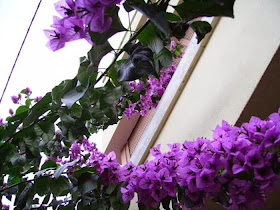Climbing Plants: Classification - We saw in a previous post, the vines are characterized by starting their life in the soil or container , and then as the name implies, climb, or go climbing on structures, as may be a wall, pergolas, meshes, columns, trellises, or the trunk of other plants , growing to great heights, that in seeking a better light source . In this struggle for light and space developed the climbers in:, which the botany are classified into three types Vines, Vines and hemiepiphytes .
Vines
The vines are climbing plants with thin stems , herbaceous, or a development of lightweight wood, thin stems, and modified primarily inhabit areas and forest edges. This type of climbing is the most widely used in gardens . Examples of vines: Cissampelos pareira, Muehlenbeckia sagittifolia, Oxypetalum macrolepis.
Lianas
Instead lianas or vines are woody vines of thick stems , which are often developing in mature forests and jungles. It is common for many lianas have anomalous secondary growth, so instead of having solid stems exhibit areas bra as a twisted structure, being similar to ropes or cords. Examples of these are the latest Bauhinia (spiral mono), Bignoniaceae, or Sapindacecae lianas.
Hemiepiphytes
Meanwhile creepers hemiepiphytes woody , is beginning his life as epiphytes then develop woody stems, climbing, extending affirming the trees that support them. Among these we find the Melastomaceae plants, Solanaceae, and Moraceae families Marcgraviaceae.
Among the existing vines can find a wide variety of species , such as ivy, honeysuckle, Lady Night, Passionflower or Passion Flower (discussed previously), climber Rosal, Glycine, among others, that we will know its characteristics in successive posts.


No comments:
Post a Comment